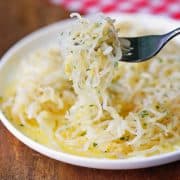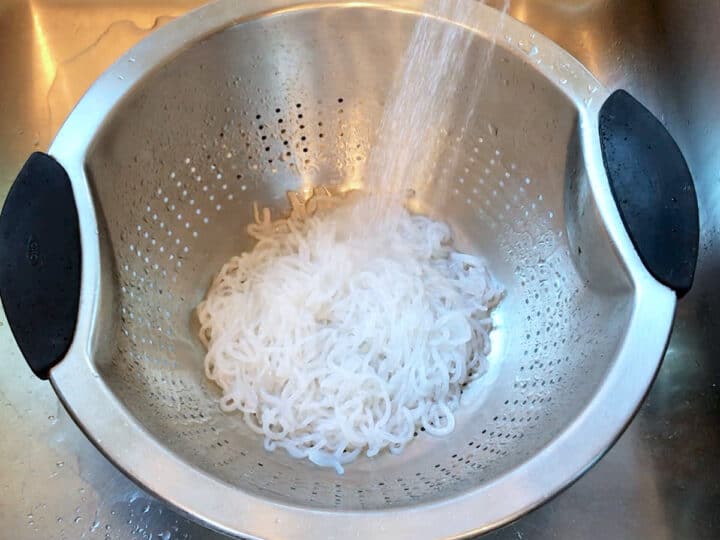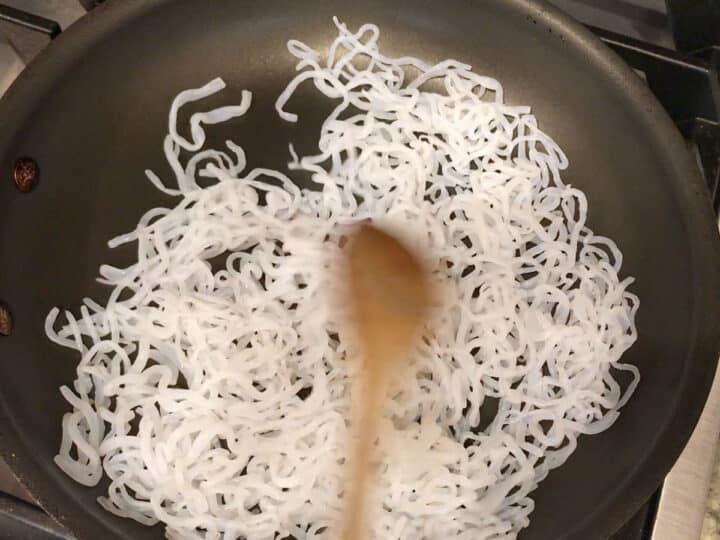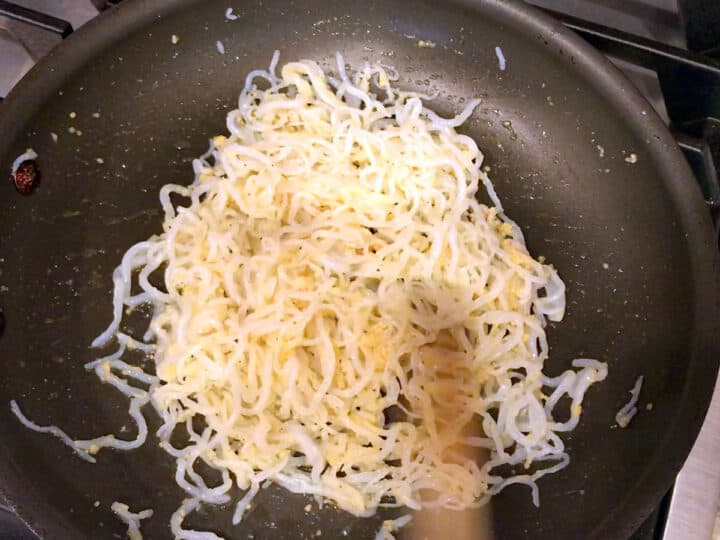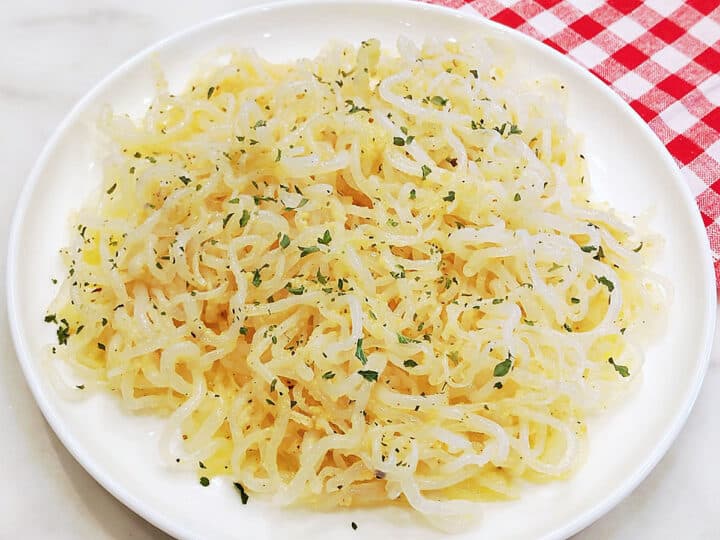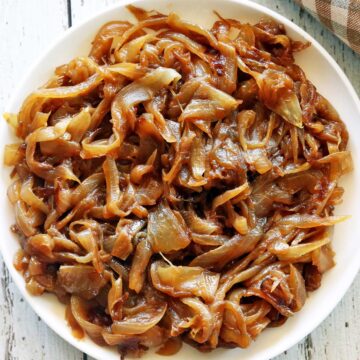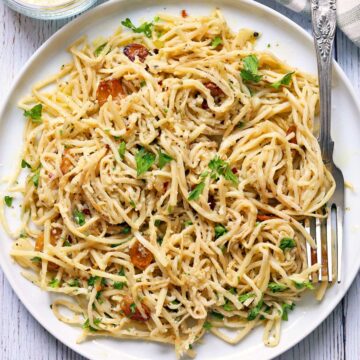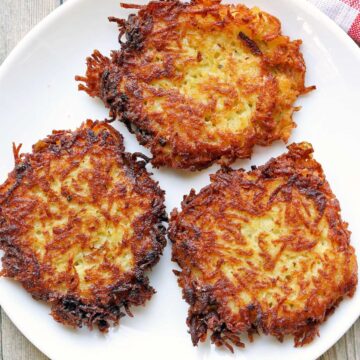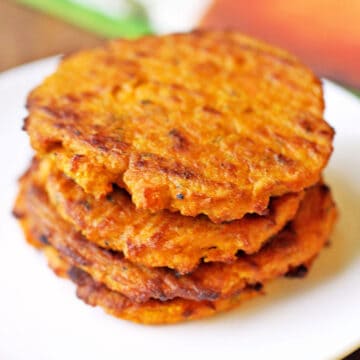Shirataki noodles are a delicious low-carb alternative to pasta. In this simple yet flavorful recipe, they are buttered and topped with Parmesan.

When my husband and I started a low-carb diet in 2011, I immediately started looking for recipes to replace our favorite foods. Not surprisingly, pasta was high on the list! I regularly make low-carb alternatives to traditional pasta, such as hearts of palm pasta, zucchini noodles, and spaghetti squash. Shirataki noodles are another great option. When cooked properly and buttered, they are delicious!
Ingredients
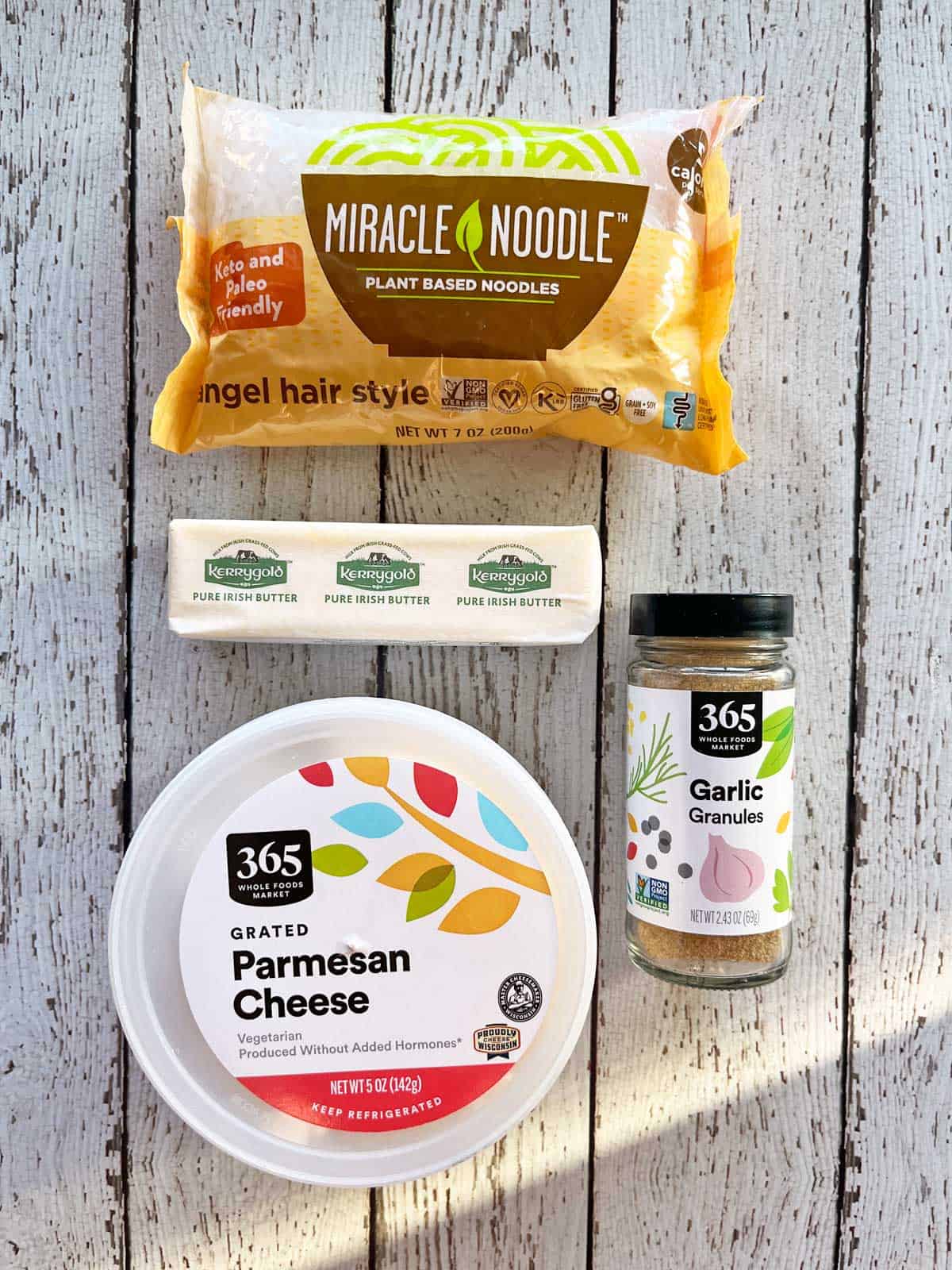
See the recipe card for exact measurements. Here are my comments on the ingredients.
- Shirataki noodles: I use angel hair noodles. I don't recommend using fettuccine shirataki. I tried those, and they had a more rubbery mouthfeel.
- Unsalted butter: A rich, European-style butter is best in this simple recipe.
- Grated parmesan: It's best to use finely grated parmesan rather than coarsely shredded cheese.
- Seasonings: Kosher salt, black pepper, and garlic powder.
Variations
- To make this a complete meal, add a cup of cooked and flaked salmon (use this baked salmon recipe) or cooked and shredded chicken (use this baked chicken breast recipe).
- For a decadent experience, add two strips of cooked and crumbled bacon (microwave bacon is fast and easy).
- Add a cup of veggies such as mushrooms or spinach. I recommend cooking them separately and then mixing them into the noodles. These sauteed mushrooms are delicious, and so is this recipe for sauteed spinach.
- Add more spices or herbs. I sometimes add a pinch of dried thyme or oregano. My husband likes to sprinkle red pepper flakes on his noodles. He uses a lot, but I suggest starting with a pinch.
Instructions
The detailed instructions and step-by-step photos are included in the recipe card. Here's a quick overview.
Rinse the noodles and drain them in a colander. Dry-roast them in a hot skillet.

Add the butter and mix to coat. Add the salt, black pepper, and garlic powder.
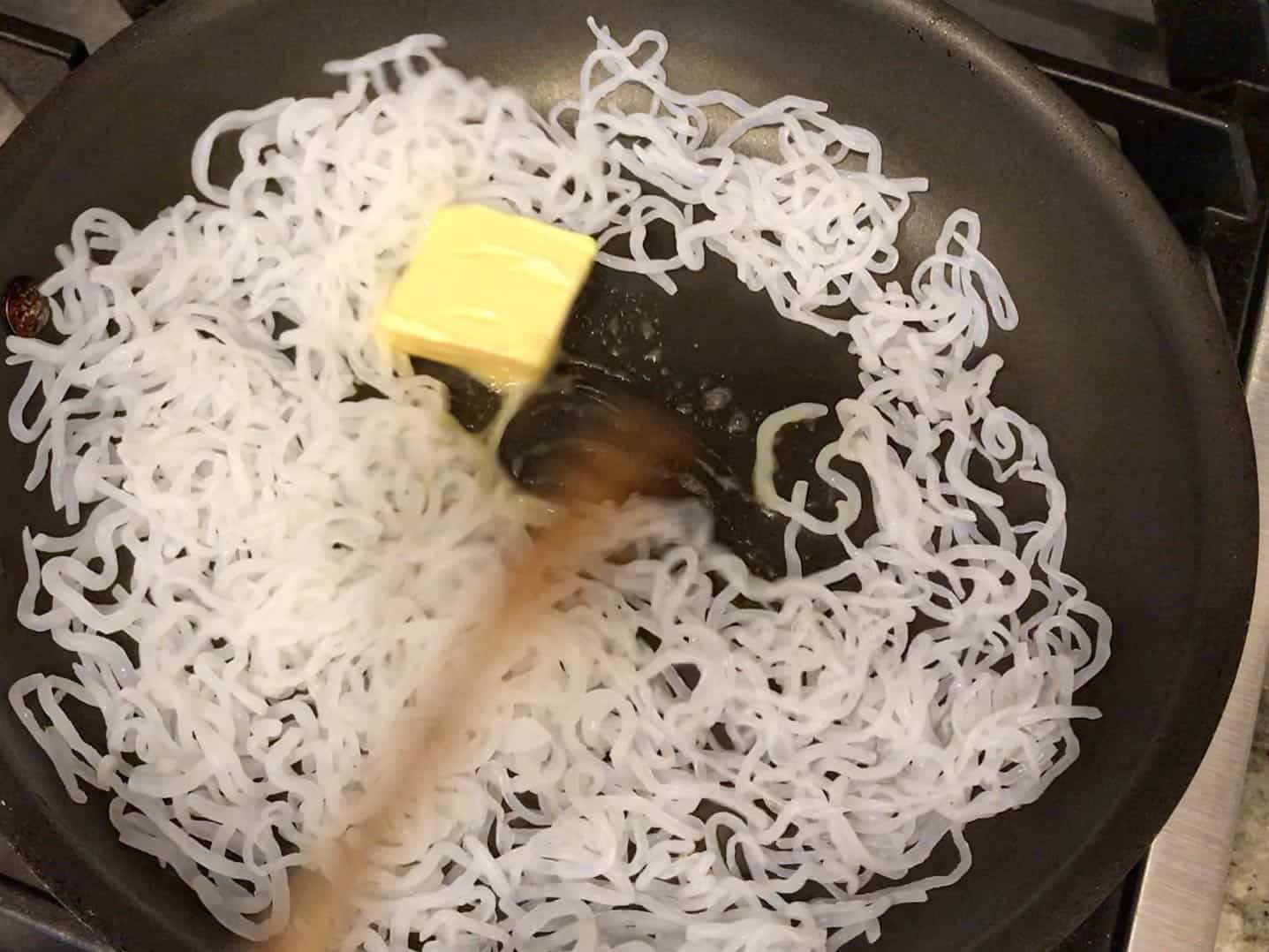
Turn the heat off, sprinkle the noodles with grated parmesan, and serve.
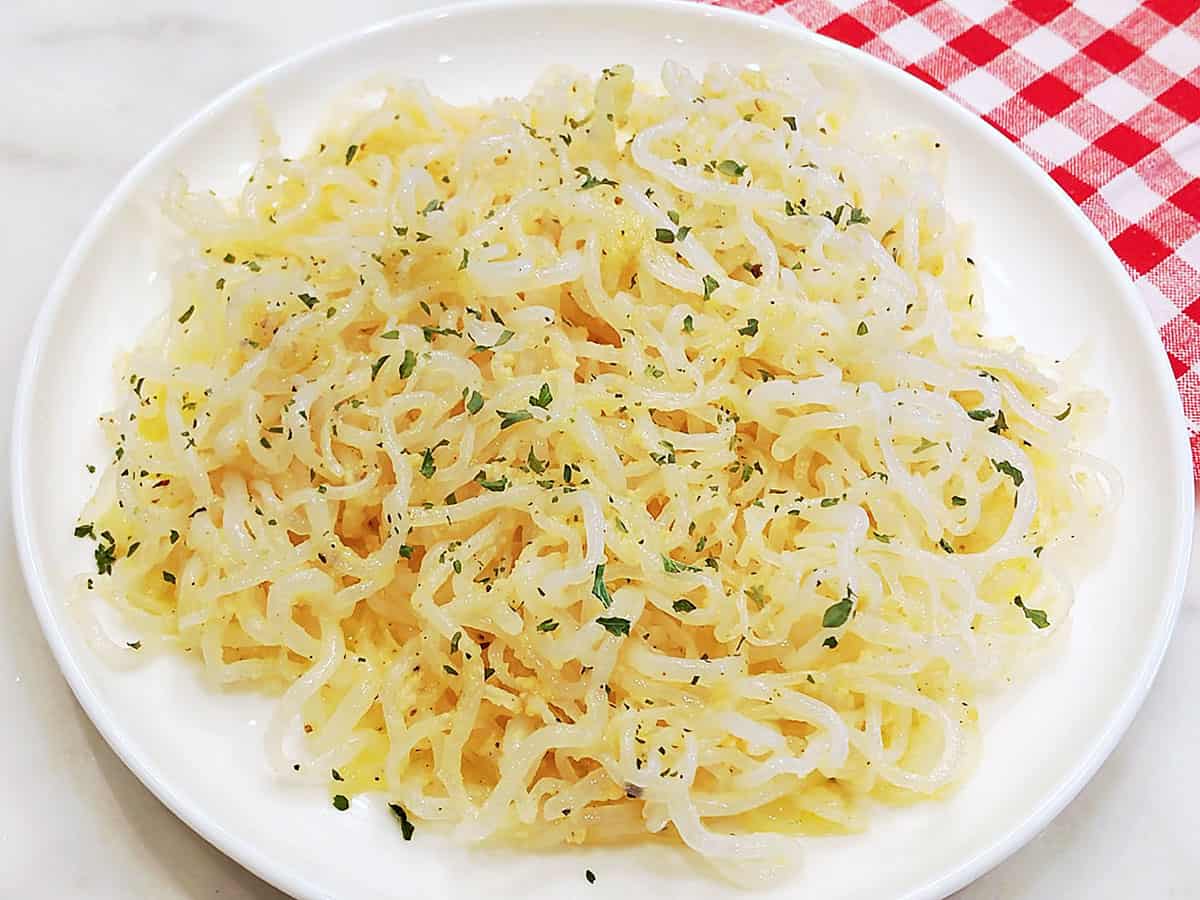
Recipe Tips
- Don't skip rinsing and draining the noodles and toasting them in a dry skillet. These steps eliminate the noodles' fishy smell and rubbery texture and help them better absorb sauces.
- These noodles are not for everyone. I suggest you start with a small amount and see how you react, digestively speaking.
- I started making this recipe in 2014. As I write this update in 2025, I am happy to report that a recent package of these noodles did not have a fishy smell. The package still recommends rinsing the noodles, but the step of boiling them was removed, so I removed it from my recipe, too. You can still see me doing it in the video.
- If you prepare them correctly, mix them with a sauce, or add them to a soup, these noodles are a good substitute for pasta. However, do not expect them to taste like real pasta- that would be impossible. Instead, consider them a good substitute for anyone on a keto, low-carb, or low-calorie diet.
- Storage: You can keep the leftovers in a sealed container in the fridge for 3-4 days. Reheat them in the microwave, covered, at 50% power. I don't recommend freezing the leftovers.
- Miracle Noodles come in three shapes - fettuccine, spaghetti, and angel hair, as shown in the photo below. I highly recommend using angel hair shirataki in this recipe for the best mouthfeel.
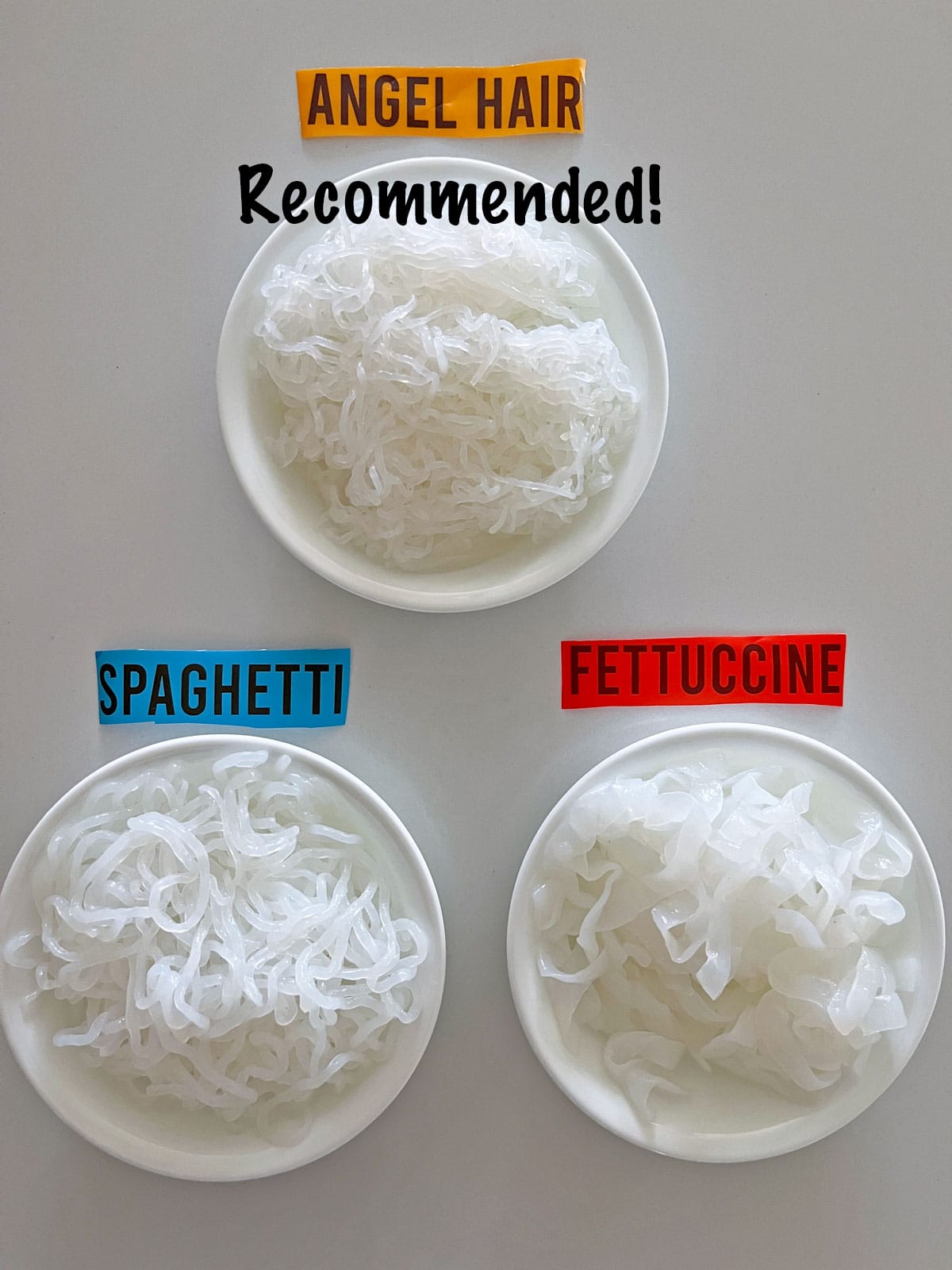
Serving Suggestions
I usually serve these noodles as a side dish. They go well with almost any main course, including broiled chicken breast, parmesan-crusted chicken, grilled salmon, and turkey meatballs.
I also like to add these noodles, plain, to chicken broth to make it more substantial and filling. They make a great addition to egg drop soup.
As mentioned above, you can turn these noodles into a main course by adding a cooked protein such as grilled shrimp, grilled salmon, or poached eggs.
Recipe Card
Buttered Shirataki Noodles
Video
Ingredients
- 1 package Angel Hair Shirataki Noodles - 7 ounces
- 1 tablespoon unsalted butter
- 2 tablespoons parmesan cheese - grated; 10 grams
- ¼ teaspoon Diamond Crystal kosher salt
- ¼ teaspoon black pepper - freshly ground
- ¼ teaspoon garlic powder
Instructions
- Open the shirataki package and pour its contents into a colander. Rinse the noodles under cold running water, then drain them in a colander.
- Heat a clean, dry, medium-sized skillet over medium-high heat. Transfer the noodles to the hot skillet and dry-roast them (adding no oil to the skillet), stirring, for 1-2 minutes, until they are visibly dry and make a squeaking sound when moved in the skillet. This step will eliminate some of their rubbery texture and help them better absorb the sauce.
- Add the butter to the skillet. Thoroughly mix it into the shirataki, coating the noodles evenly. The noodles look much better now. They started out translucent-white and slimy, turned into a more opaque white after dry-roasting, and now, covered in butter, they are golden and smell great!
- Add the salt, pepper, and garlic powder, mixing them evenly into the noodles. Turn the heat off and mix in the parmesan. Serve immediately.
Notes
- These noodles are not for everyone. I suggest you start with a small amount and see how you react, digestively speaking.
- A rich, European-style butter is best in this simple recipe.
- You really do need to rinse and drain the noodles and toast them in a dry skillet. These steps remove the noodles' fishy smell and rubbery texture and help them better absorb sauces.
- I started making this recipe in 2014. As I write this update in 2025, I am happy to report that a recent package of these noodles did not smell fishy. The package still recommends rinsing the noodles, but the step of boiling them was removed, so I removed it from my recipe, too. You can still see me doing it in the video.
- To make this a complete meal, add a cup of cooked and flaked salmon (use this baked salmon recipe) or cooked and shredded chicken (use this baked chicken breast recipe).
- You can add a cup of veggies such as mushrooms or spinach. I recommend cooking them separately and then mixing them into the noodles. These sauteed mushrooms are delicious, and so is this recipe for sauteed spinach.
- You can keep leftovers in a sealed container in the fridge for 3-4 days. Reheat them in the microwave, covered, at 50% power. I don't recommend freezing the leftovers.
Nutrition per Serving
Save this Recipe!
We will also add you to our weekly newsletter. Unsubscribe anytime. See healthyrecipesblogs.com/privacy/ to learn how we use your email.
Disclaimers
Most recipes are low-carb and gluten-free, but some are not. Recommended and linked products are not guaranteed to be gluten-free. Nutrition info is approximate. Please verify it independently. The carb count excludes non-nutritive sweeteners. Please read these Terms of Use before using any of my recipes.

